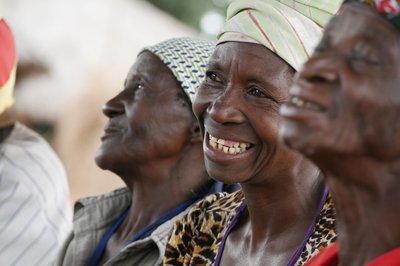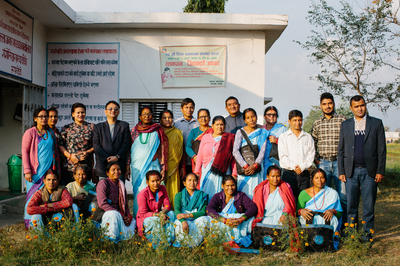
What is Leprosy?
What is leprosy?
Leprosy (or Hansen’s Disease) is a disease caused by the bacillus mycobacterium leprae.
What are the symptoms of leprosy?
Leprosy starts by damaging nerves close to the surface of the skin. The first signs are often discoloured patches on the body that have lost sensation.
Because mycobacterium leprae multiplies slowly, symptoms of the disease can take a long time to develop - around five years on average but sometimes as long as 30 years.
Does leprosy still exist?
Yes. Leprosy is not an affliction of the past. It is a 21st century disease, devastating people’s lives right now. 2,000 years after Jesus healed people affected by leprosy, the disease continues to affect men, women and children. We will not stop until leprosy is defeated.
What are the complications associated with leprosy?
If treated early, it’s unlikely the disease will cause permanent disability.
But if left untreated, it progresses and the nerve damage spreads. Lacking sensation in their hands and feet, people with leprosy can injure themselves. And these injuries can lead to ulcers, infection and permanent disability.
Leprosy can cause muscle paralysis, resulting in clawed fingers and foot drop. This makes it difficult for people to walk or use their hands.
The condition can also damage nerves in the face, causing the eyelid muscles to stop working. As the eyes are no longer protected by blinking, they are easily damaged, leading to sight loss and blindness.
Some people experience reactions to the leprosy bacteria in their body, even when the bacteria are dead/have been treated and treatment is underway or completed. These reactions can cause pain, sickness, swelling of the skin and fever. They are hard to treat, making it necessary for people to stay in hospital for a long time.
Is there a cure for leprosy?
A cure for leprosy has been available since 1982. Multidrug therapy is a combination of three drugs taken daily for six or 12 months, depending on the severity of the disease.
But while treatment stops leprosy progressing, it can’t reverse disability.
This is why the specialist services we provide are vital. A clawed hand, dropped foot or damaged eyelids can be restored with surgery. Ulcers can heal with effective treatment. Custom-made protective footwear can reduce the chances of injury and stop ulcers developing. However, some disabilities caused by leprosy are too severe for surgery to have much effect.
What causes leprosy?
Leprosy is mainly spread by moisture droplets passed through the air from someone who has leprosy but has not started treatment. Leprosy is not hereditary.
Is leprosy infectious?
Leprosy is only mildly infectious. You can’t catch it by touching someone. It usually takes years of living close to an untreated leprosy patient to catch the disease. And around 95 per cent of people are thought to be naturally immune. When immunity is lowered due to poor nutrition, illness and general living conditions, people are more likely to catch leprosy.
Stigma and discrimination
In some countries, people are afraid of leprosy, due to ancient myths and superstitions or a lack of understanding. People may not want to touch someone affected by leprosy in case they too get the disease. Or they may not understand that someone is leprosy free after completing treatment.
People affected by leprosy are often subjected to stigma and discrimination. They can be rejected by their families, friends and communities. Many people lose their jobs and struggle to find new employment. Others lose their homes or find themselves excluded from school.
One way the stigma of leprosy persists is through use of the word ‘leper’. This word is offensive to people affected by the disease. It is associated with the prejudice and appalling treatment they have faced.
We use the term ‘people affected by leprosy’, or ‘leprosy patient’ for someone undergoing treatment.
Watch Arshad's story to find out about leprosy
Leprosy facts
- Today, millions of people are affected by leprosy, including those yet to be diagnosed and people cured but permanently disabled
- According to the World Health Organization (WHO), there are more than 200,000 new cases of leprosy diagnosed globally each year - 202,185 in 2019. This number fell dramatically in 2020, to 127,396, as a result of the Covid-19 pandemic, which has led to less new case detection and fewer countries reporting on new cases. It then rose to 140,594 in 2021.
- 53 per cent of new cases of leprosy diagnosed in 2021 were found in India
